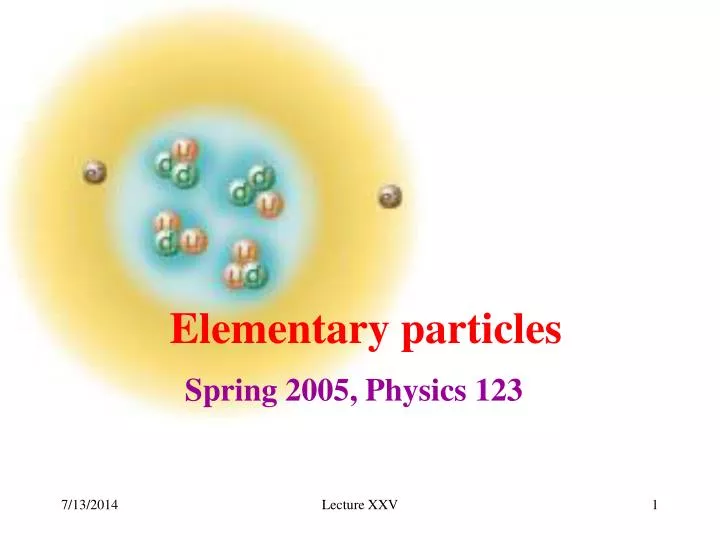
These three colored quarks together form a color-neutral baryon. Alternatively, three quarks can exist together, one quark being "red", another "blue", another "green". The color and anticolor cancel out, forming a color neutral meson. A quark may pair up to an antiquark: the quark has a color and the antiquark has the corresponding anticolor. However, color charged particles may combine to form color neutral composite particles called hadrons. Unlike the electromagnetic force which diminishes as charged particles separate, color charged particles feel increasing force effectively, they very rarely separate from one another (and when they do they create an energy carrier particle which later converts to two new quarks of different type). However, gluons are themselves color charged, resulting in an amplification of the strong force as color charged particles are separated. Color charged particles interact via gluon exchange in the same way that charged particles interact via photon exchange. Every quark carries one of three color charges of the strong interaction antiquarks similarly carry anticolor. Quarks and antiquarks have never been detected to be isolated, a fact explained by confinement. Gauge bosons – gluon, W and Z bosons, photon Other bosons - Higgs boson, graviton Standard Model Quarks - up, down, strange, charm, bottom, top Leptons - electron, muon, tau, electron neutrino, muon neutrino, tau neutrino Particles associated with fundamental forces are bosons, having integer spin. According to this methodology: particles normally associated with matter are fermions, having half-integer spin they are divided into twelve flavours. The spin-statistics theorem identifies the resulting quantum statistics that differentiates fermions from bosons.
Elementary particles how to#
There is no better way to understand the necessary abstract knowledge and solidify its meaning than to learn how to apply it to the computation of observables that can be measured in a laboratory.īeginning graduate students, both experimental and theoretical, and advanced undergraduate students interested in particle physics, will find this to be an ideal one-semester textbook to begin their technical learning of elementary particle physics.All elementary particles are either bosons or fermions (depending on their spin). The emphasis is on obtaining practical knowledge of how to calculate cross-sections and decay rates.

Martin and Wells provide readers who have no prior knowledge of quantum field theory or particle physics a firm foundation into the fundamentals of both. This book is a comprehensive and technical introduction to Standard Model physics. The successes of the Standard Model over the years have been tremendous and enduring, leading up to the recent discovery and continuing study of the Higgs boson. Furthermore, the model was developed within the context of relativistic quantum field theory, making it compatible with all of the laws of Einstein's Special Relativity.

The concepts of quarks, leptons, neutrinos, gauge symmetries, chiral interactions, Higgs boson, strong force, weak force, and electromagnetism were all put together to form a unifying theory of elementary particles.

The Standard Model of elementary particle physics was tentatively outlined in the early 1970s.


 0 kommentar(er)
0 kommentar(er)
